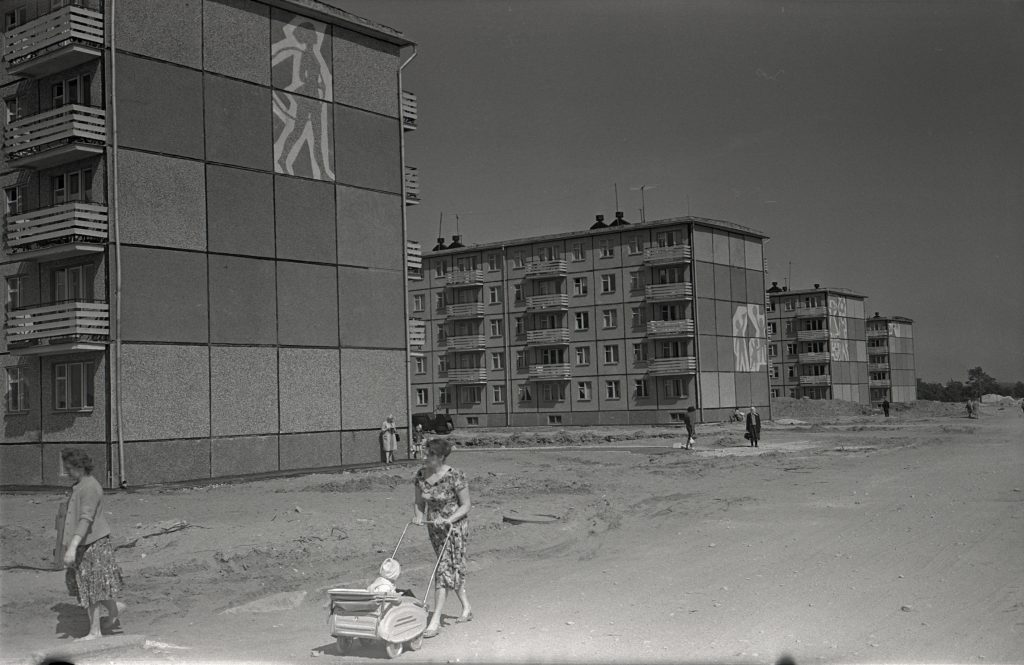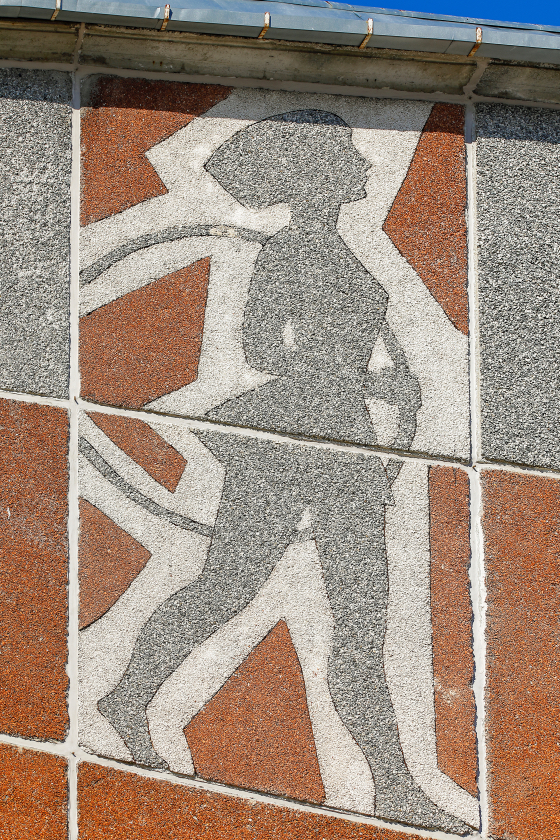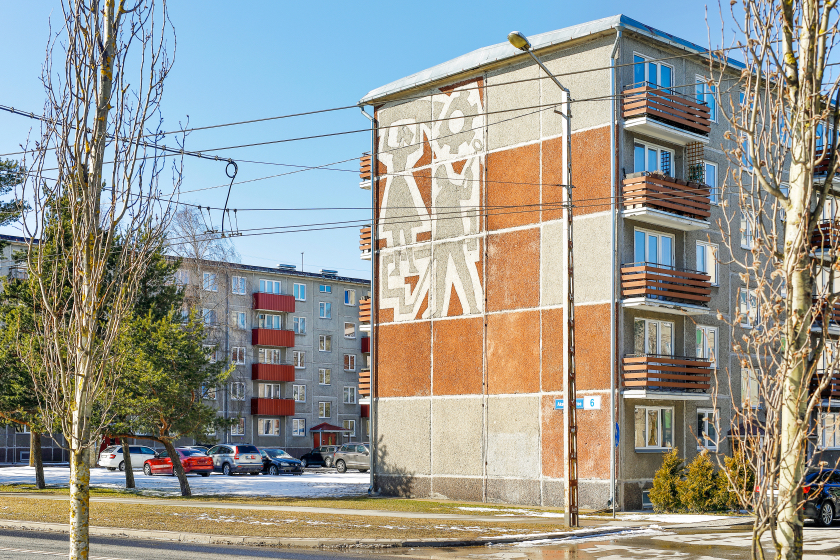End walls of buildings at Mustamäe
Tallinn, Akadeemia 6 and 22
Margarethe Fuks, Valli Lember-Bogatkina, Enn Põldroos
1965
In 1960s, the architecture of buildings favoured similarity as something universal, democratic and reassuring, based on the ideas of the gurus of functionalism of the beginning of 20th century. In Mustamäe district, which became the symbol of the period, busy construction activities began in 1962, because Tallinn Building Plant had started operation in the capital, manufacturing concrete elements developed in the company of the French engineer Raymond Camus. Thus the practical beauty of modernism started to dominate, which increased the importance of the structure as well as details – from balcony railings to the purity of construction. First, an attempt was made to create local identity with decorated end walls, adapting the project 1-464 of Giprostroiindustrija, but soon the decorations requiring much labour and high costs were abandoned, and buildings were proposed with windows in the end walls.
Figures in neo-simplistic monumental style could be seen on the end walls of buildings. Of these, a girl with gymnastic hoop and a worker with a female collective farmer have been preserved. Other figures included also playing children and symbols of zodiac, which was rather peculiar, taking account of the Soviet atheism – Libra, Cancer, Virgo (or just a maiden, if you wish) and Taurus. Their performers were Margarethe Fuks, Valli Lember-Bogatkina and Enn Põldroos, who all became more well-known later.
Today, most former stylish end walls have disappeared in result of heat insulation works. However, naive decorations and comprehension that laconic architecture is not perfect without art have regained popularity at Mustamäe.




